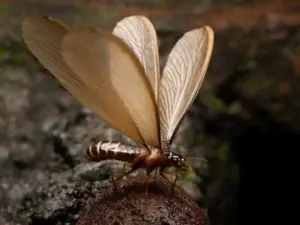
It’s Termite Swarming Season! Here’s What You Need to Know
Many people don’t realize when termite swarming season occurs in North Carolina. So, when they see termites, they may not realize just how severe the problem may be and the potential danger these pests can cause.
When termite swarming season hits, what does it mean for you and what should you do if you see a swarm of termites? We’re going to answer these questions and more so that you know what to expect. We’ll also let you know how A-1 Pest Control can help to control termites that may be lurking in your home.
When Do Termites Swarm in North Carolina?
in North Carolina, termite swarms typically occur in the spring months from March to April. However, swarming patterns can fluctuate with changes in weather conditions, such as unusually warm or wet winters, which might lead to earlier or more prolonged swarming periods. When a mild or wet winter has occurred, you can expect termite swarming season to begin in early March in North Carolina. Termites often swarm on a warm day after rainfall. The humidity and moisture from the rain make the environment more conducive for termites to emerge from their nests and participate in their swarming behavior, which is a part of their reproductive cycle.
Why do Termites Swarm?
Now that we know when termites swarm, we need to know why.
Once the original colony of termites has reached a capacity, the colony is ready to expand and branch out. During the spring, after the cold weather has passed and the colony has grown, the alates emerge from their nest. Their narrow bodies press through the cracks to open air where they take off. This doesn’t happen all at once. There is usually one large release on one day with several smaller groups leaving over the next few days.
The job of the alates is to reproduce and expand the colony. They need to swarm, find a mate, land, and establish a new colony. The swarm only lasts for a few hours at most. When the alates swarm into the air, they pair off with a mate, land, and their wings fall off so they can start a new nest.
If there are no nearby colonies for termites to exchange alates, termites from the same colony can still form their new expansion. It’s important to recognize that while there may be thousands of termites in a swarm, only a handful will survive to establish a new colony.
Identifying Termite Swarmers
Termite swarmers or flying termites have the main purpose to reproduce. As we mentioned above, they swarm to find partners and start their own termite colony.
This is what they look like:

This is what a swarm of flying termites looks like:

If you notice termite swarmers in your home or yard, there’s a good chance you have a termite colony living in your yard, or possibly even inside your home.
FAQ About Termite Swarming Season
Is a swarm of termites dangerous?
While termite swarmers are not wood-eating members of the termite colony, they can be a red flag that there is a dangerous termite presence. Since a colony of termites can cause extreme damage, finding a swarm of flying termites inside or around your home is something you should be concerned about. When you do notice this, call A-1 Pest Control so we can assess the situation and get the problem under control.
If I kill the insect swarmers is the problem solved?
Even though flying termites are the visual indication of the problem, simply killing termite swarmers that you see is not the solution to a termite infestation. Termite workers are the ones that cause the real damage, chewing through wood and causing damage, and these workers act almost invisibly inside of structures themselves.
Termite infestations can go on for months and years without being identified because of the secretive nature of these termite workers, allowing colonies to grow and cause even more long-term damage.
What’s the difference between swarming termites and flying ants?
Some people mistake flying ants for swarming termites. But there are some major differences. Termites have straight antennae and wide bodies without pinched waists. Swarming termites have wings that are the same length and clear.
Flying ants have elbowed antennae and pinched waists. They can be black, brown, or reddish. They also have two pairs of wings that are different sizes and tinted brown.
What are termites attracted to your home?
The main draw is food. Termites love to eat wood or anything that is cellulose-based, like lumber, firewood, or newspaper. They thrive in moist soil around the foundation. They also tend to like warm, dark places that are undisturbed.
Call A-1 Pest Control if You See Swarming Termites
If you see swarming termites or suspect you have a problem, call A-1 Pest Control. A-1 Pest Control provides termite solutions that can eliminate an existing termite problem, as well as protective and preventive Sentricon and Termidor services that help reinforce your home for any future termite threat. Just reach out to us and we’ll answer any questions that you may have and get you on the path to a termite-free home!

